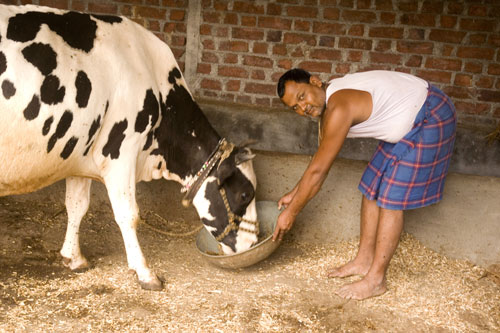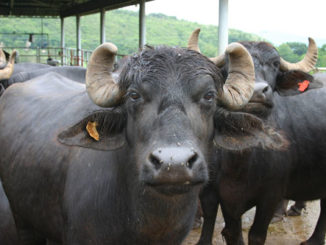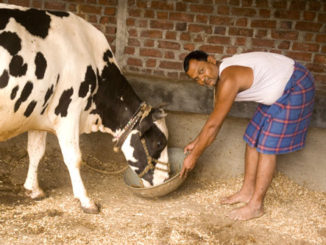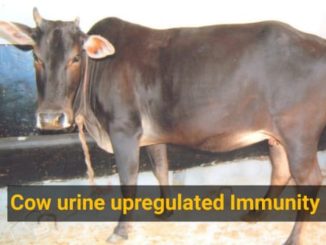Ruminants have become the most promising livestock in India due to ample marketing opportunities for their products. In India, among the small ruminants goat are managed mainly on grazing, but in view of the continuous depletion of grazing land, the intensive system of rearing needs attention. On the other hand, the availability of feed and fodder, both in quantitative and qualitative terms, is one of the major constraints in the sustainable development of the livestock sector. Effective utilization of available feed resources is the key to economical livestock rearing. Feeding management is also one of the challenges for profitable dairy farming under stall-fed conditions. Total Mixed Ration feeding can be used as an important management manoeuvre in farm animals to improve their performance under stall-fed conditions.
In spite of having the potential for good economic returns from dairy animal rearing, farmers have very poor income levels. There may be a number of reasons responsible for such a situation. The productivity of farm animals under the prevailing traditional extensive production system is low mainly because of feed scarcity and lack of adoption of improved technologies and management practices.

A total mixed ration (TMR), or complete ration, is a practice of weighing and blending all feedstuffs into a nutritionally balanced ration, which provides an adequate amount of nutrients to meet the needs of animals which help them to achieve maximum growth and performance. TMR supplies a balanced ration to the cow of all feeding systems and ensures that every bite consumed by the animal is the same. It is a new concept in delivering nutrients as a complete balanced ration to dairy animals and other ruminant stock in the tropics. Feeding “complete rations” or TMR has been prevalent since the 1950s in developed countries. However, in the smallholder dairy production system that is predominant in India, a crop residue-based TMR (also referred to as ‘dry TMR’) is more apt. It can be customized to the lactation stage of the animals and therefore contributes to higher productivity.
- The roughage portion of this TMR primarily comprises of crop residues such as wheat straw, paddy straw, dry sugarcane tops, etc., which are available in abundance locally. Incorporation of these crop residues prevents their being burnt in the fields, thus mitigating the adverse effect on the environment.
- The TMR thus manufactured is economical than the conventional cattle feed of similar nutrient composition
- Feeding a TMR that’s correctly balanced for your cows can increase milk production by 1 to 2.5 kilograms per cow daily.
- Milk fat and other components can increase.
Therefore, feeding of basal diet in form of Total Mixed Ration (TMR) could be an important management manipulation as poor feeding under stall-fed is affecting the production potential of dairy animals to a great extent. The term total mixed ration (TMR) or complete ration (CR) is defined as a quantitative mixture of all dietary ingredients, blended thoroughly without giving any choice to the animal for selection of any specific ingredient. Feeding of concentrates and roughages in form of TMR can result in a steady supply of nutrients, enhance the feeding value of a poor quality crop residue, simplify feeding, further adding in better efficiency of nutrient utilization and improved productivity. TMR feeding reduces wastage, improves density and decreases dustiness. In addition, feeding of TMR results in a ruminal steady-state condition which is conducive to continuous rumen fermentation because of uniform substrate availability. TMR occupies an important role during drought situations where the availability of green fodder is limited. It acts as an effective vehicle to render some specific medicines to animals, especially to control the infections caused by parasites. It can also be used as a transporter for many feed additives, herbal extracts, nutraceuticals and micronutrients to enhance livestock productivity. Moreover, in order to simplify the labour-intensive stall-fed system, TMR seems to be the only answer for economizing productive performance in goats.
Formulating TMR rations for groups
Balance rations for slightly higher nutrient intake than the group’s average milk production. Use the dry matter (DM) intake of the group to formulate the ration to the desired nutrient amounts. In general, formulate lactating cow rations for milk productions about 20 per cent above the group average.
For example, if the group averages 26 kilograms of milk daily, formulate rations for 31 kilograms of milk daily. Rations formulated slightly above average milk production can help cows produce more. If they don’t, the extra nutrition can aid in growth or body condition.
Formulate first lactation cow groups for 30 per cent above milk production of the group to promote growth.
Conclusion
The main objective of any livestock enterprise is to convert feedstuffs into animal products at a faster and cheaper rate. Total mixed ration can act as a sustainable source for the feeding of farm animals along with maintaining their growth and production performance keeping in view the current agriculture scenario.






Be the first to comment